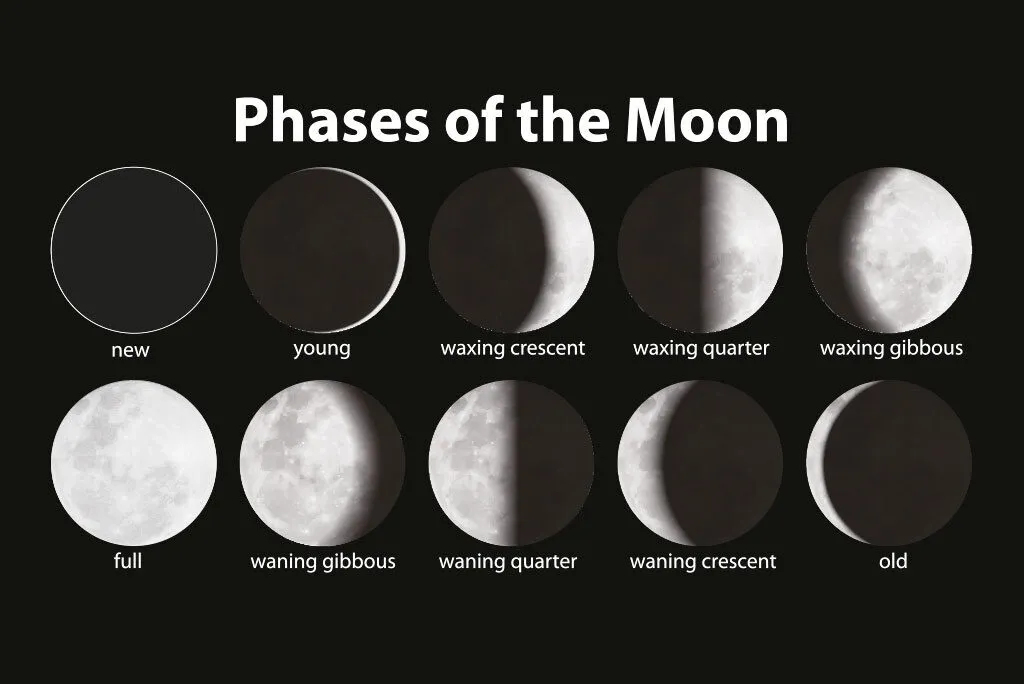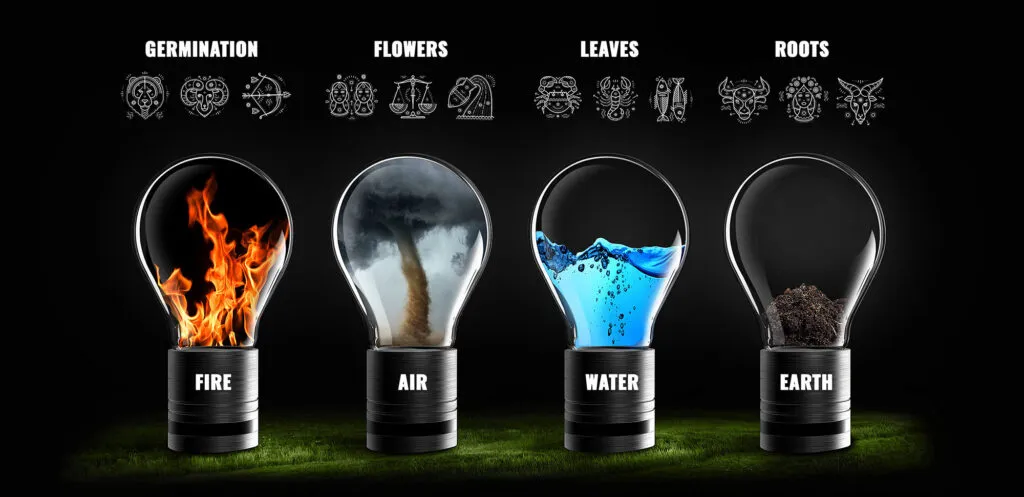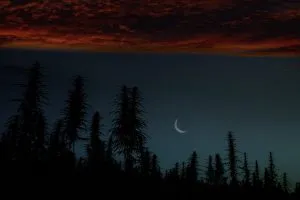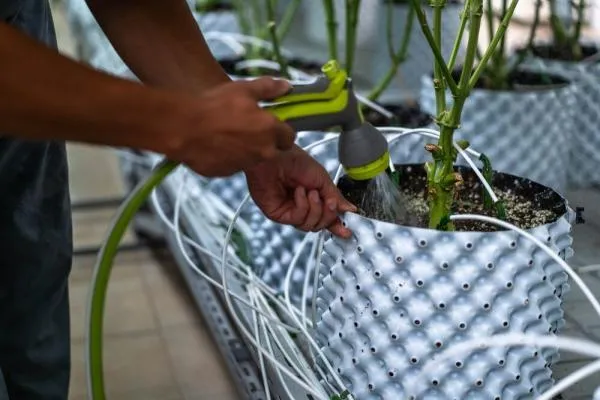When growing outdoors, typically growers worry about the sun without thinking of the moon. But, lunar moon phases have more to do with growing than you may think. Farmers and gardeners have synced cultivation with lunar cycles for decades with success. A method that’s catching on amongst cannabis cultivators and for good reason. Certain moon phases can promote foliage growth, and increase the overall vitality of plants. To become universally ‘one’ with your outdoor cannabis crops, keep reading for everything you need to know about moon phases affecting plant growth.
Moon Phases to Know
Moon or lunar gardening is an old-time method of cultivation, used by many native civilizations like Native Americans. It references the way the moon can affect plants throughout their life cycle, in regards to development, growth and harvesting. The idea of the legend is by syncing up growth cycles with the lunar calendar, the moon’s illumination and gravitational pulls - your plants will be healthier and will maximize overall yields. Which every cannabis grower could benefit from.

So, let’s review each phase of the moon and how they may affect outdoor cannabis cultivation.
- Waxing moon - Waxing means ‘growing’ and represents the 14-15 days that comprise the next four moon phases. The waxing phase is best for veg and it uses the energy of the moon to develop leaves, stems and foliage. The gravitational pull from the waxing phase allows plants to uptake nutrients better, and is ideal for treating nutrient deficiencies.
- New moon - At the beginning of a lunar cycle, comes the new moon. That means the moon is found directly between the earth and the sun. It also means that the face of the moon that’s facing the earth is completely dark. For gardening, the new moon is ideal for defoliation or treating for pests, or issues. The new moon also marks when water content is the lowest in plants, making it an ideal phase to harvest in for drying and curing purposes.
- Crescent moon - A crescent moon appears as the moon begins to shift out of position from the sun and moon. During this transition a small ‘slice’ can be seen from the sun’s reflection. The waxing and specifically, the crescent moon phase is said to be best for germinating.
- First quarter moon - The ‘first quarter’ moon appears when the moon is at a 90 degree angle from the earth. From earth, you can see a semi-circular version of the moon that looks somewhat like the letter D.
- Gibbous moon - The final stage of ‘waxing’ moon phases is the gibbous moon. Gibbous moons reflect more sunlight to the earth, appearing brighter but not quite full. During the gibbous phase, due to the gravitational pull, your plants can uptake nutrients more efficiently.
- Waning moon - The waning moon phases represents the last half of the moon cycles, and also takes 14-15 days to complete. During this phase, the moon loses illumination as it returns to the beginning position or ‘new moon’. Waning phases are most recommended for transplanting and making clones.
- Full moon - The full moon is another prominent type of moon for crop and cannabis growth. Its fullness occurs from the earth sitting between the sun and the moon. Where the sun’s light, ‘lights up’ the moon. Because the full moon is highly illuminated, photons shimmer down on plants, and foliage. It also pulls sap to the upper parts of the plant so it’s best to avoid harvesting, and wait until the moon is waxing again to avoid issues with drying. However, some moon gardeners recommend harvesting during the full moon for higher content of ‘sap’ or resin for a boost in potency.
- Disseminating moon - As the moon becomes less illuminated, it enters the ‘waning’ phase of the lunar cycles. The disseminating moon is not as bright, and takes on a ‘lemon’ shape similar to the gibbous moon of the waxing phase.
- Second-quarter moon - When the moon returns to a 90 degree position from the earth, on the opposite side - you’ll see the second-quarter moon. Similar to the first quarter moon, you’ll see a semi-circle reflection of the sun on the moon.
- Balsamic moon - To return to the beginning of the moon phases, the balsamic moon is much like that of the crescent moon. Due to its 45 degree position from the earth.
Ascending vs Descending Moons
Now that you understand the full 30 day cycle of lunar phases, it’s time to understand ascending vs descending moons for plant and cannabis growth. Regardless of waning or waxing, the moon naturally ascends or descends in a cycle every 27 days. According to lunar gardening, ascending and descending positions can have an impact on common practices of growth. Here’s a breakdown of what to know about each.
Ascending: When the moon is ascending, it pulls this energy into the plants. Meaning, sap rises into the upper parts of the plant. The ascending phases of the moon is ideal for veg, or making clones from mother plants. It’s also best to avoid harvesting during this time as the buds will be more filled with liquid making drying and curing more difficult.
Descending: On the flip side, descending moons forces sap or the energy of the plant more into the ground. This amplifies underground energy and activity, ideal for outdoor cannabis transplanting or seed germination. It’s also the best for soil enrichment, meaning it’s an ideal time for making your own compost or super soil.
Zodiac Constellations for Additional Lunar Benefits

Last but not least, the 12 zodiac constellations can have an effect on lunar or moon gardening. More than just your ‘horoscope’, the fire, earth, air and water signs are said to impact growth, and yields. Especially when the moon passes over the specific constellation, and heightens the assigned elements. Here’s how -
Fire constellations - Aries, Leo, and Sagittarius
The fire constellations of aries, leo and sagittarius are most beneficial for germination. Some lunar gardeners tend to avoid the actual planting of plants during fire constellations with the belief they receive smaller yields.
Air constellations - Gemini, Libra, and Aquarius
When the moon passes over the air constellations of gemini, libra and aquarius, flower growth is boosted. This means, it’s recommended for transplanting or making clones when flowers are stronger.
Water constellations - Cancer, Scorpio, and Pisces
The water signs of cancer, scorpio and pisces swell plants, and boost leaf and stem growth. It’s recommended to foliar spray during these constellations, and perform any low stress training.
Earth constellations - Taurus, Virgo, and Capricorn
The earth signs of taurus, virgo and capricorn not surprisingly can benefit the ‘root systems’ found in the earth. Roots develop healthier and faster, so planting in the ground or supplementing soil mixes can be ideal during these phases.
Love by the sun, live by the moon
As you can see, there’s a lot that can go into lunar or mood gardening for cannabis crops. But if you’re growing outdoors, it could be worth the work of syncing up to improve results. Bookmark this handy guide now, and seek out the annual moon phases for the year you plan to implement moon or lunar gardening. Then, you can see how the phases align, and best decide when to do what with your outdoor cannabis crops for lunar gardening boosts in growth and yields.










